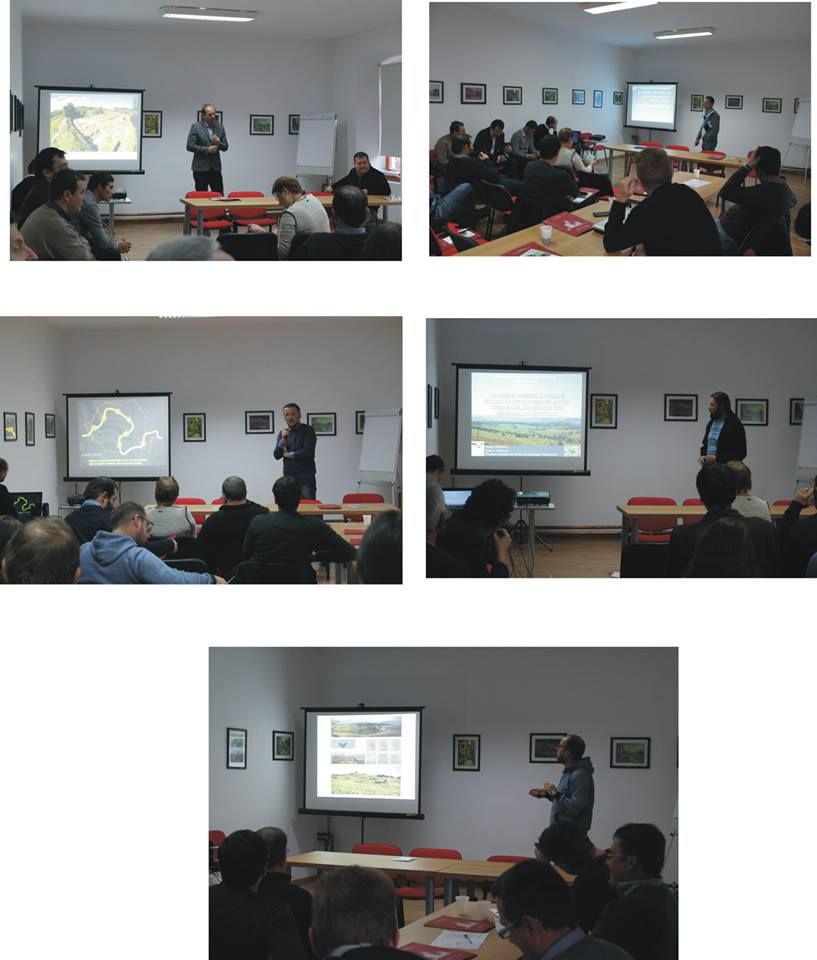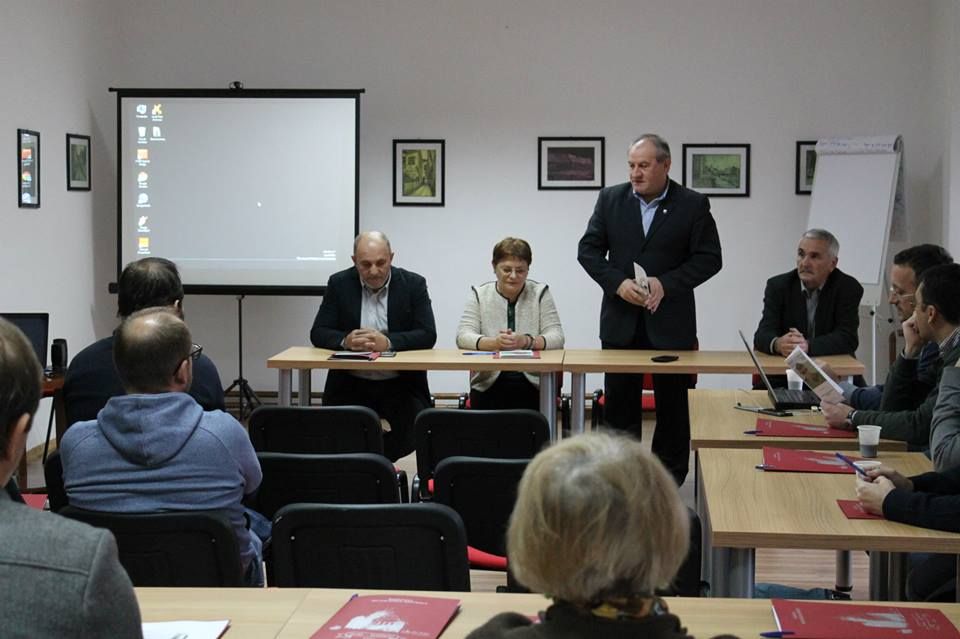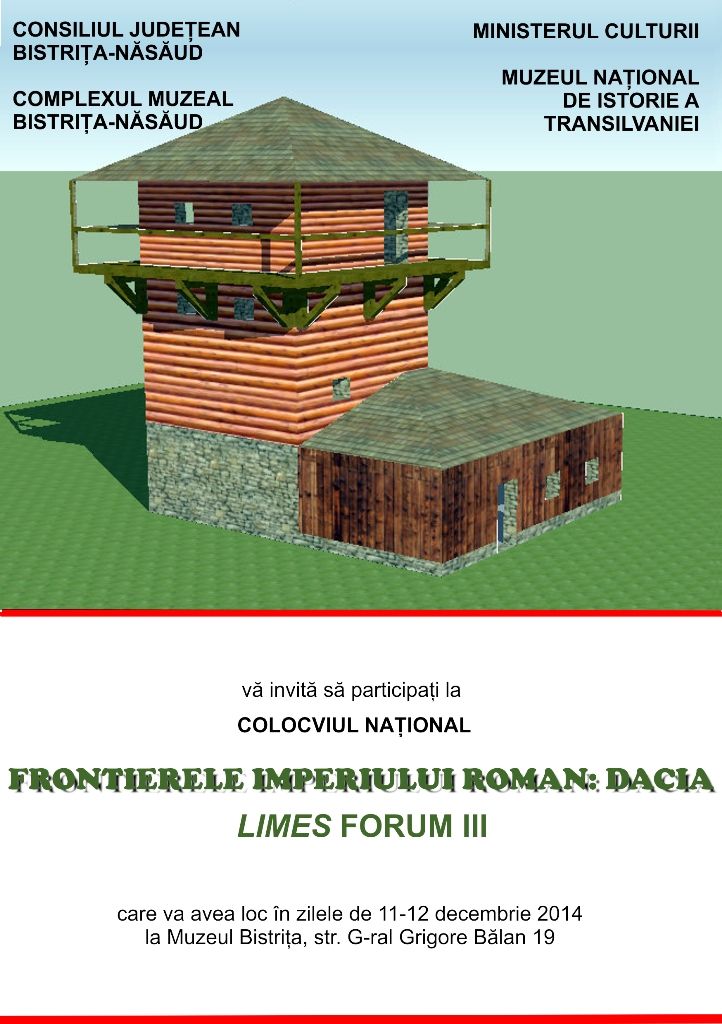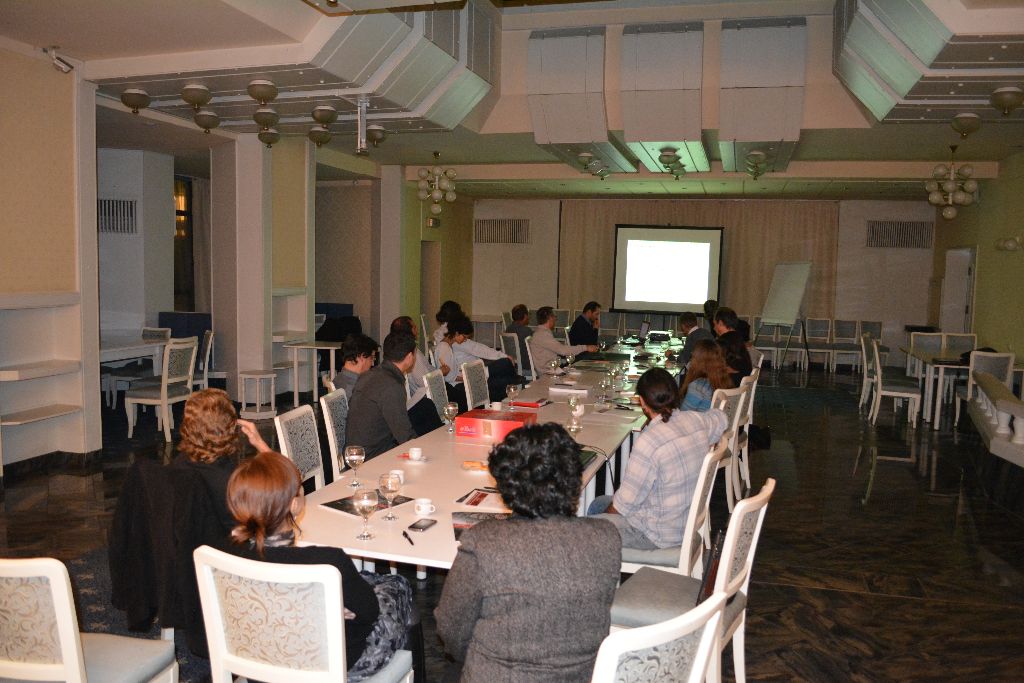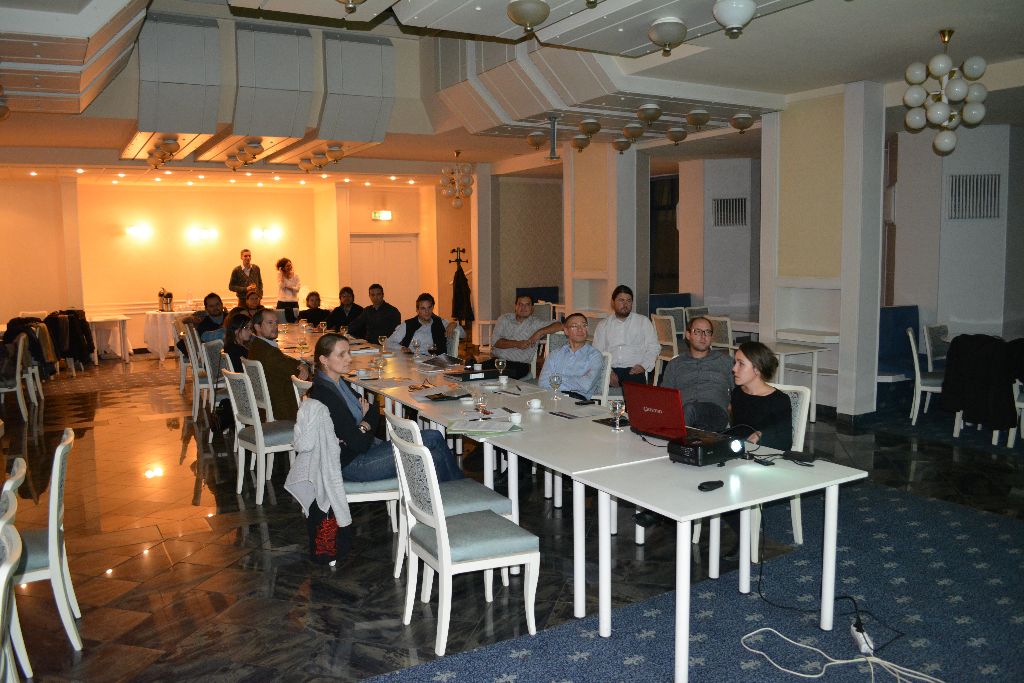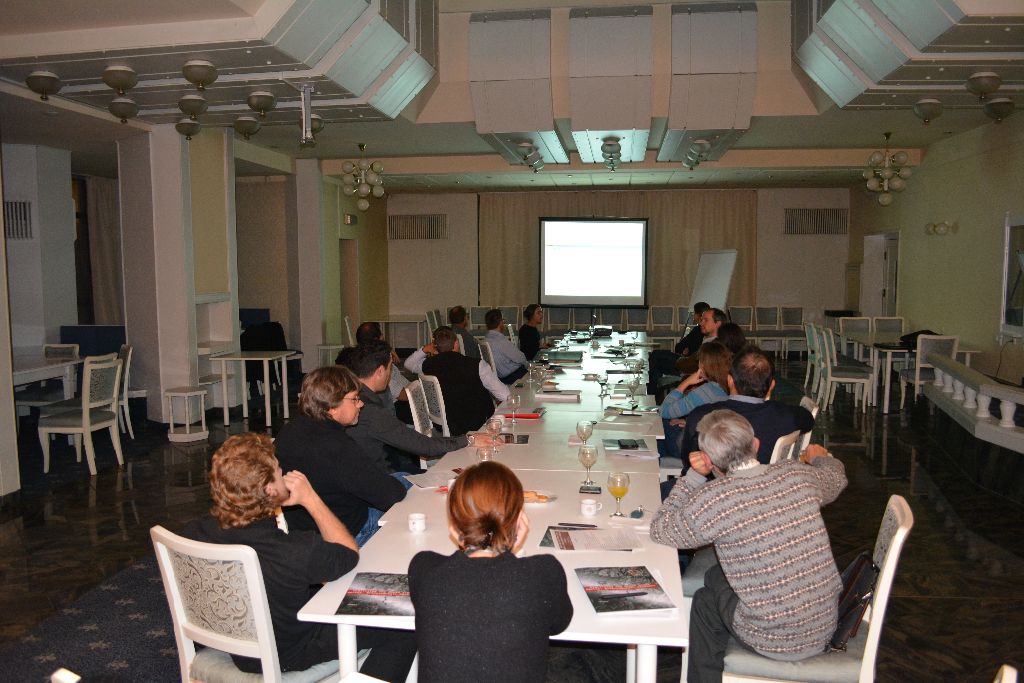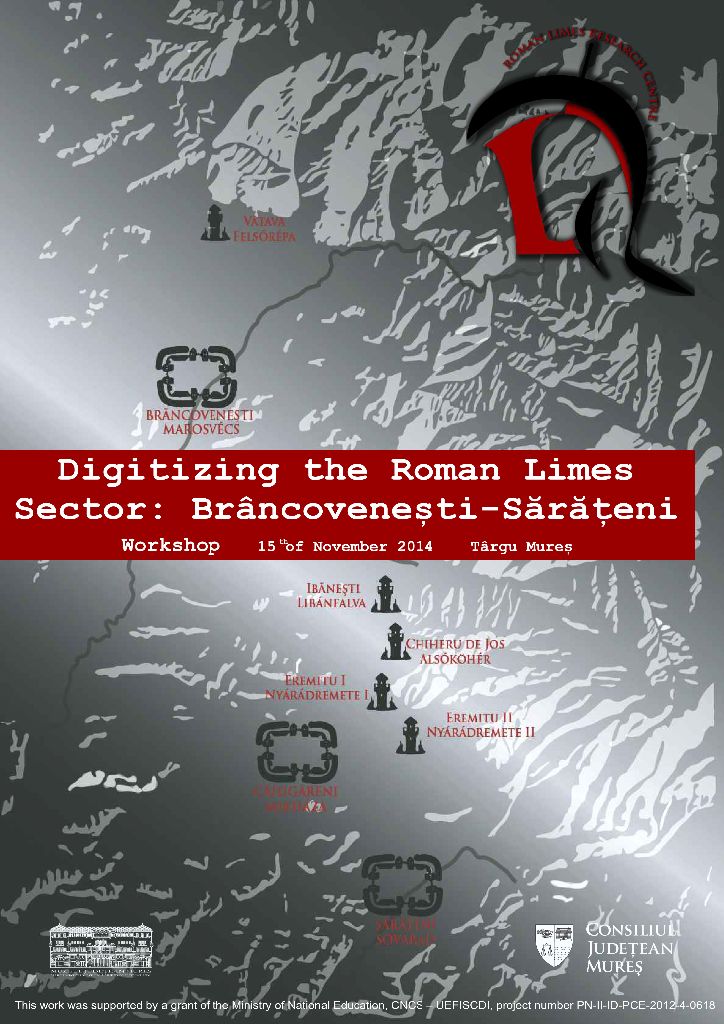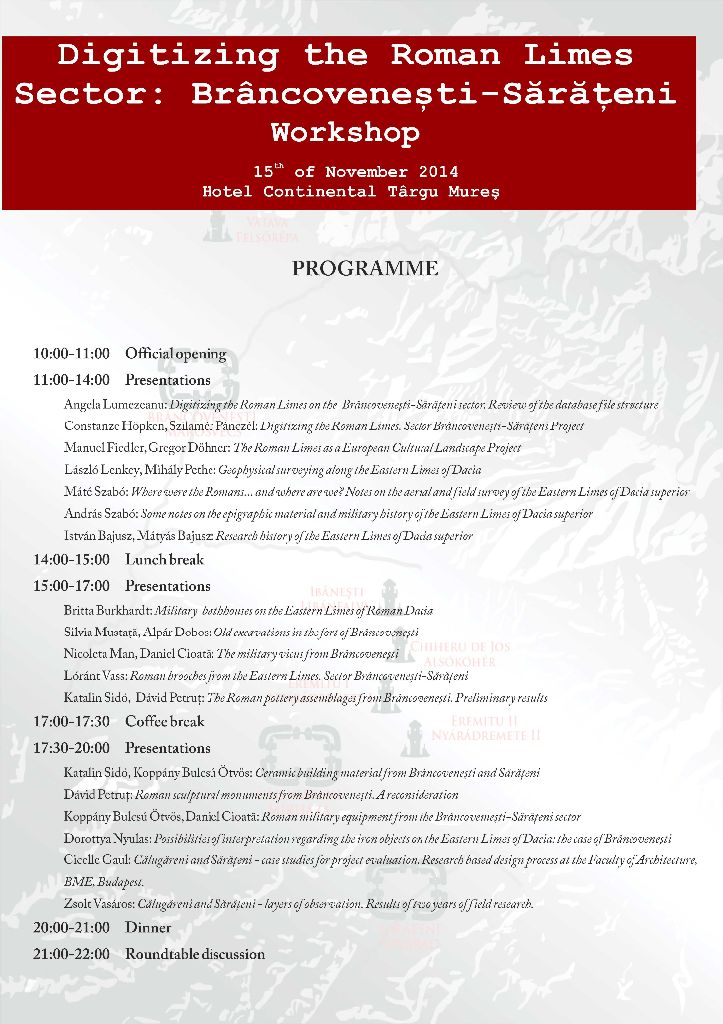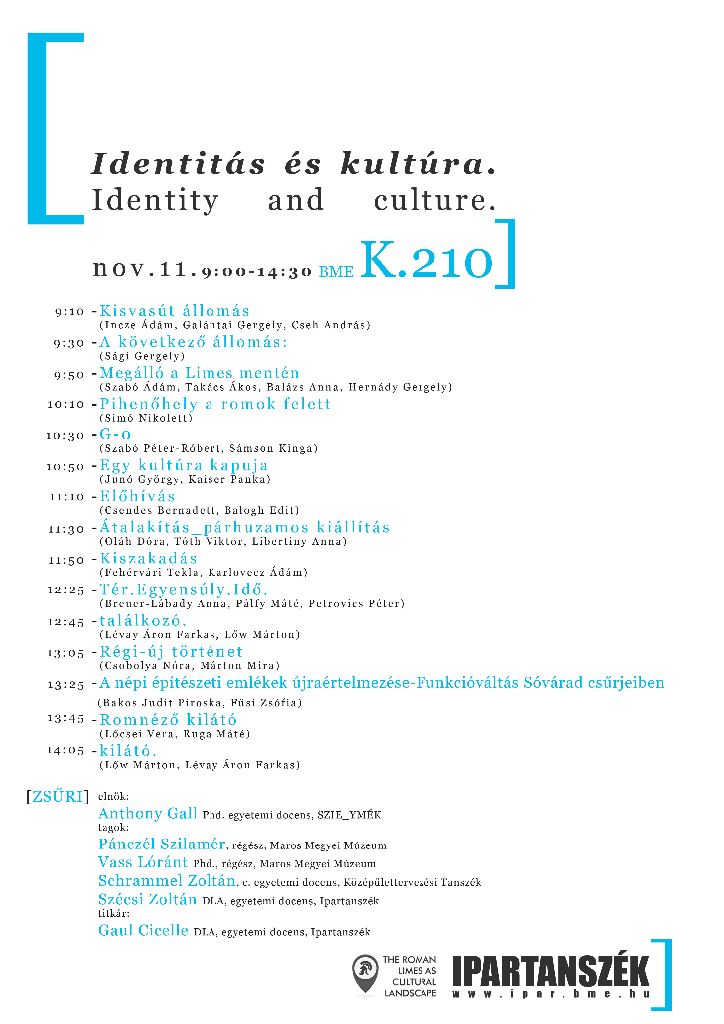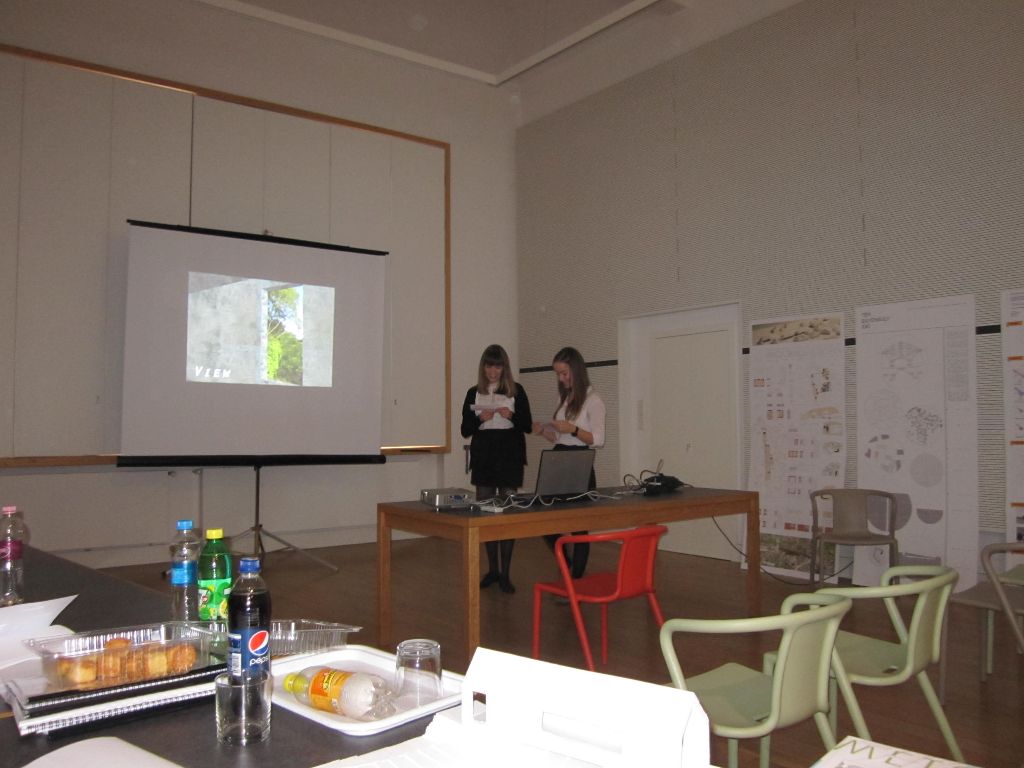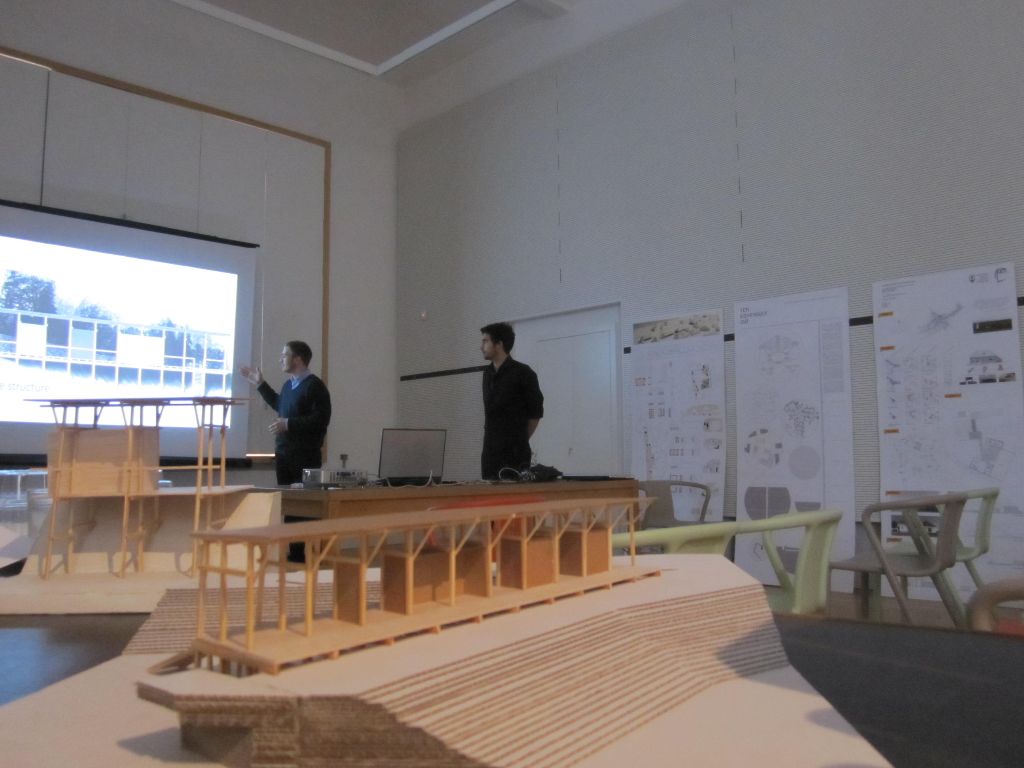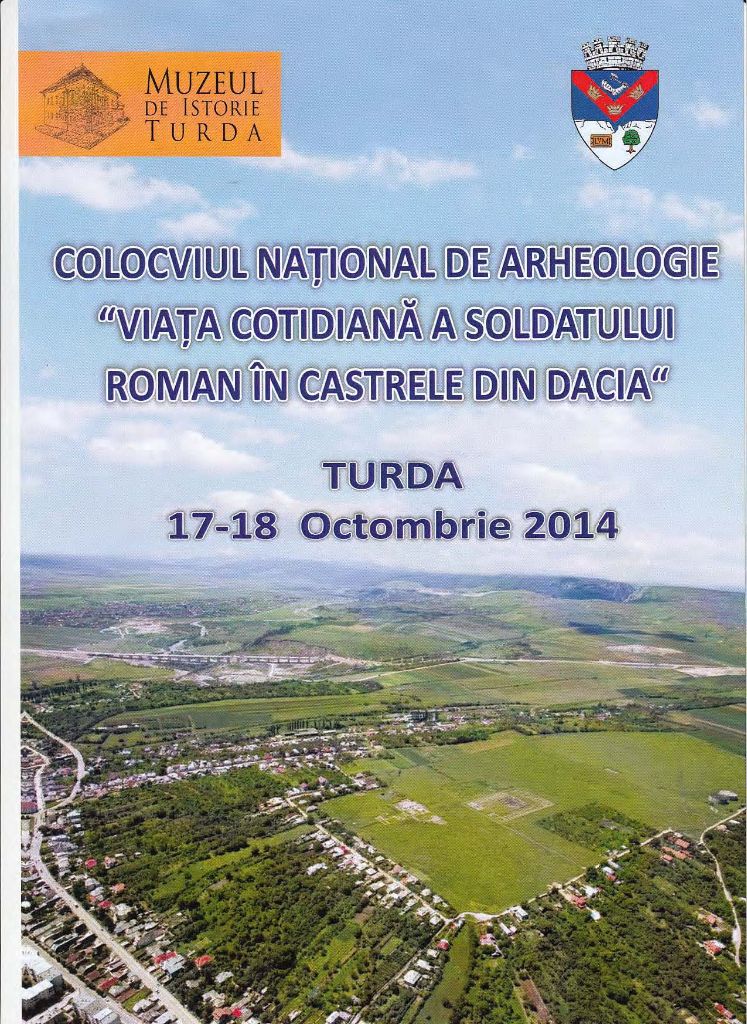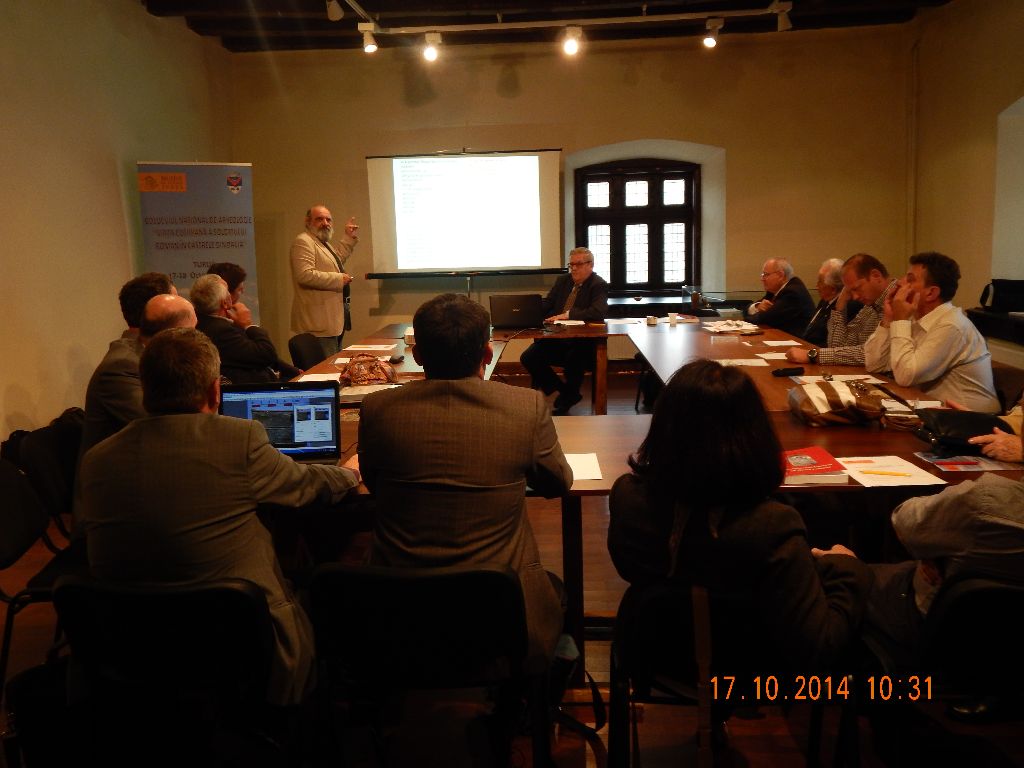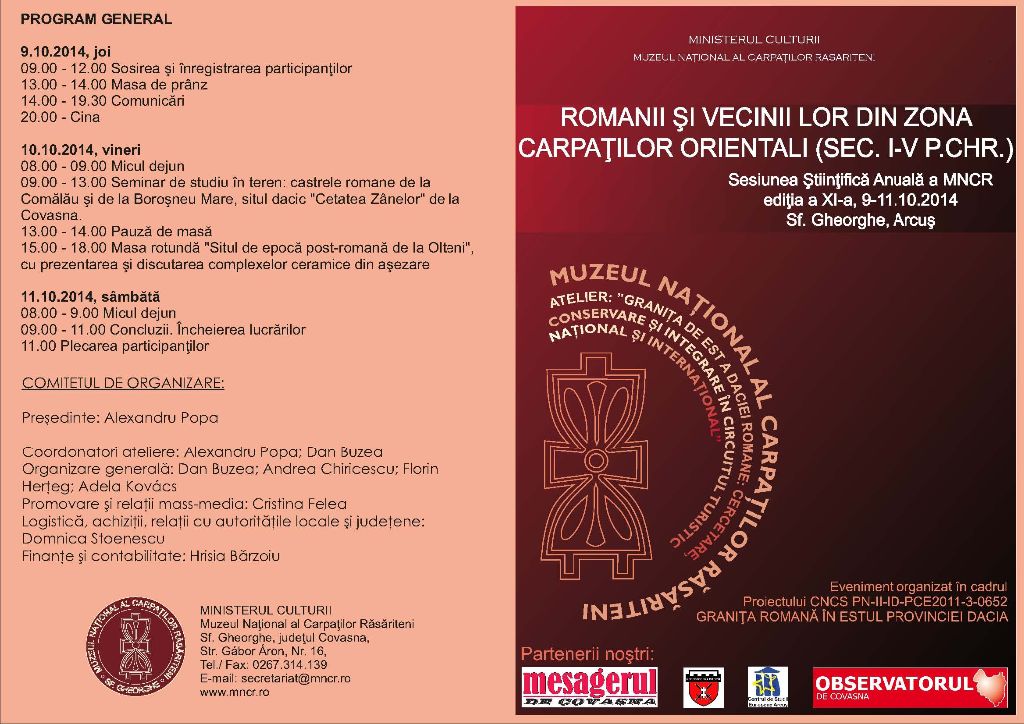Discussing military and civilian art in Roman Dacia
On the 23rd and 24th of October 2015 a two-day long national archaeology conference was hosted by the History Museum of Turda for the 3rd consecutive time, with the extensive participation of specialists from universities, museums and research institutes from across the country. The topic of the session encompassed various aspects of provincial Roman art in Dacia, focusing on the confluence of military and civilian artistic expression within the province. Our team was represented by Dávid Petruț who held a presentation on the subject of the funerary monuments discovered in the area of the auxiliary fort from Brâncovenești on the eastern limes of the province. The lectures engaged fruitful discussions related to modern approaches in the research of military provincial art. Besides the talks, the guests had the opportunity of attending the opening of the archaeological exhibition entitled: ‘Roman Potaissa. An archaeological retrospective’.









